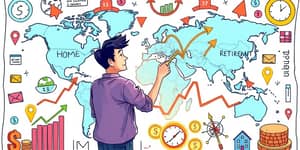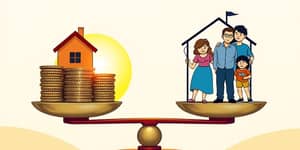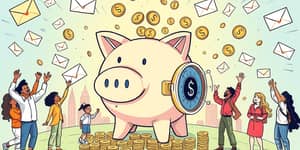Every day, we make purchases and pay bills, often unaware of the small charges that quietly chip away at our budgets. These unseen annual costs hidden in daily life may feel insignificant alone, but collectively they can reshape our financial health.
Understanding Invisible Expenses
Hidden costs are the recurring or overlooked expenses embedded in routine spending. They extend far beyond big-ticket items, seeping into month-to-month budgets through subscriptions, maintenance fees, insurance premiums, and subtle price adjustments.
While a single streaming subscription might appear harmless, dozens of minor services and insurance riders can accumulate rapidly. What’s more, inflation and “shrinkflation”—the practice of reducing product size while maintaining or raising prices—intensify this burden.
The Weight of Homeownership
For many, owning a home represents stability and investment. Yet beyond principal and interest, homeowners often encounter a hidden bill exceeding $21,000 annually on average. This figure encompasses multiple categories:
In states like Florida, these combined expenses can constitute up to 37% of a household’s median income. Moreover, 89% of Gen Z homeowners admit they underestimated these ongoing charges, leading to financial stress and depleted emergency funds.
Recurring Spending Traps
Aside from housing, everyday overspending lurks in several routine areas. The so-called “subscription creep” sees individuals signed up for multiple streaming platforms, cloud services, and app memberships—often forgotten until the annual bank statement arrives.
- Overlapping insurance policies that offer redundant coverage
- Auto-renewing trials and premium upgrades
- Small transaction fees on digital payments and credit cards
Such recurring costs are harder to spot and cut than impulse buys, yet they drain resources steadily. Tax inefficiencies, including overlooked deductions and suboptimal withholding plans, add another layer of financial leakage.
Inflation, Shrinkflation, and Eroded Purchasing Power
Between 2021 and 2024, grocery inflation peaked at 13.5%, while overall inflation settled at 2.9% by the end of 2024. Though these rates have moderated, prices for food, energy, and shelter remain elevated. Consumers frequently discover that product packages shrink, even as their bills stay the same or climb.
The combined effect is that wages often don’t keep pace with rising costs, forcing more families to live paycheck to paycheck. The emotional toll of these pressures can manifest as decision fatigue and long-term financial anxiety.
Emergency Expenses and Lack of Preparedness
Unexpected costs—like a car repair or a broken appliance—test household resilience. Nearly 60% of Americans lack enough savings to cover a $1,000 emergency, revealing how hidden costs undermine the ability to handle routine crises.
When unplanned repairs coincide with subscription renewals and tax deadlines, the strain can push households toward debt or force cutbacks on essential services.
Behavioral Shifts and Consumer Responses
Facing these pressures, 54% of Americans plan to reduce spending on travel, dining out, and entertainment in 2025. Almost one in three is willing to incur debt for discretionary purchases. Many have adopted couponing, bulk buying, and generic brands to stretch dollars further.
Around 43% of consumers cite inflation as their top financial worry, with parents especially vigilant: 69% now set detailed monthly budgets to manage educational expenses, groceries, and utilities.
Coping Strategies and Financial Empowerment
Turning the tide on hidden costs requires a systematic approach. Start by reviewing bank and credit card statements monthly. Identify all recurring charges and decide which services you truly need.
- Use personal finance apps for categorization and alerts
- Negotiate bills, from cable to insurance, at renewal time
- Set aside an emergency fund covering at least three months of expenses
These steps may seem small, but they build a foundation for sustainable financial security, reducing stress and improving long-term resilience.
The Macro Perspective and Call to Action
Hidden costs aren’t limited to households; the federal government pays over $2.6 billion daily in interest on national debt. As this burden grows, it has indirect consequences on taxes, social services, and economic stability.
By understanding and addressing the hidden costs in personal budgets, individuals contribute to broader economic health. Proactive financial management not only safeguards your family but also relieves pressure on public resources in the long run.
Ultimately, awareness and action are key. Regular expense reviews, strategic budgeting, and mindful consumption can transform unseen charges into visible choices, empowering you to reclaim control of your finances.
Start today: audit your statements, question every subscription, and rebuild trust between you and your money. The journey may be gradual, but each step brings you closer to true financial confidence.
References
- https://www.morningstar.com/news/pr-newswire/20250903ne64051/insurify-report-reveals-hidden-costs-add-more-than-21000-annually-to-homeownership
- https://www.businessinsider.com/financial-planner-sneakest-places-people-overspend-2025-4
- https://www.cbsnews.com/news/saving-money-emergency-expenses-2025/
- https://www.bankrate.com/credit-cards/news/discretionary-spending-survey/
- https://www.intelligentaudit.com/blog/stalled-spending-in-2025-what-the-data-reveals
- https://www.mpamag.com/us/mortgage-industry/industry-trends/hidden-costs-can-spike-homeownership-burden-by-more-than-21000-report/548452
- https://www.civitasinstitute.org/research/the-hidden-cost-of-federal-deficit-spending
- https://www.bankrate.com/banking/savings/emergency-savings-report/










